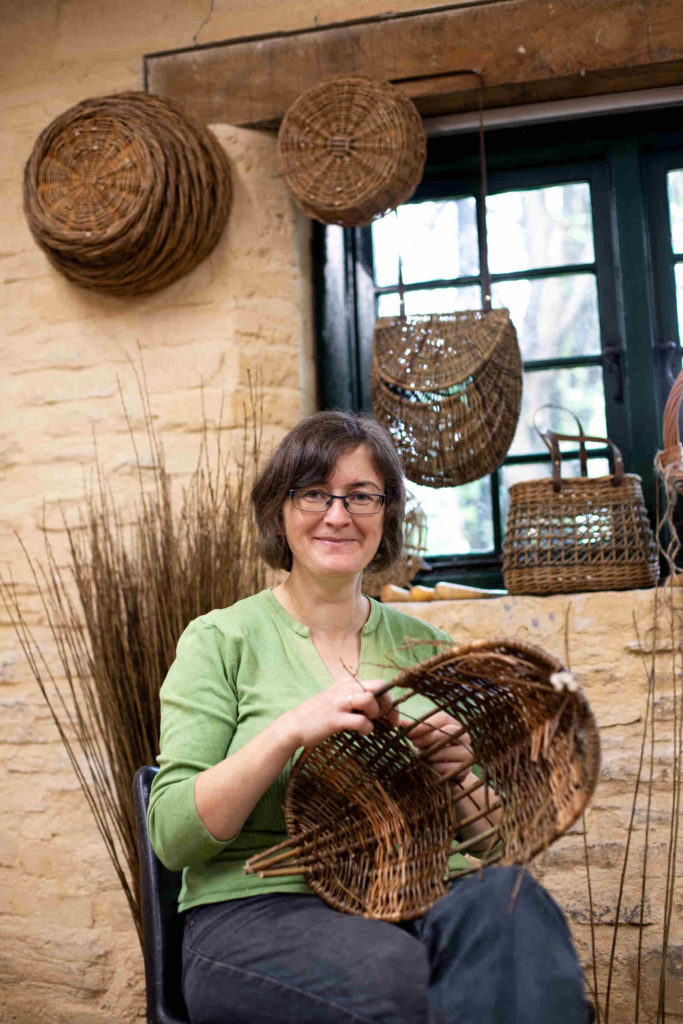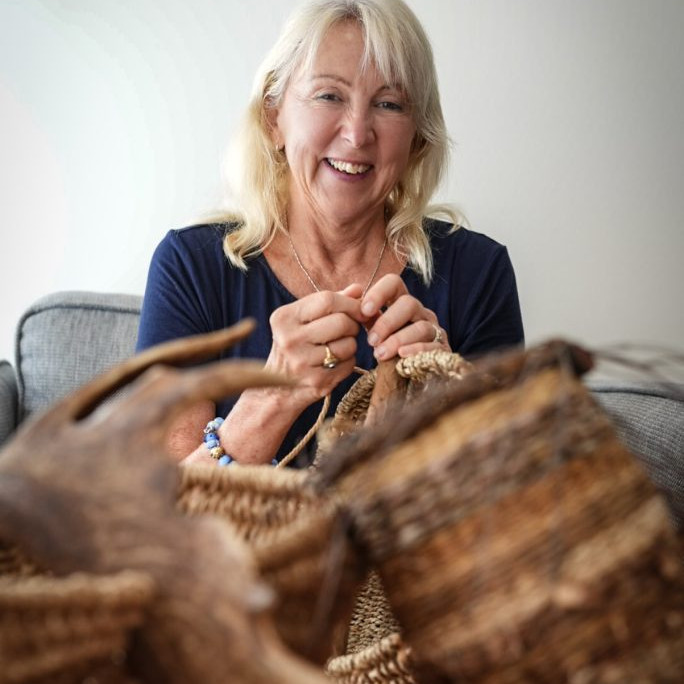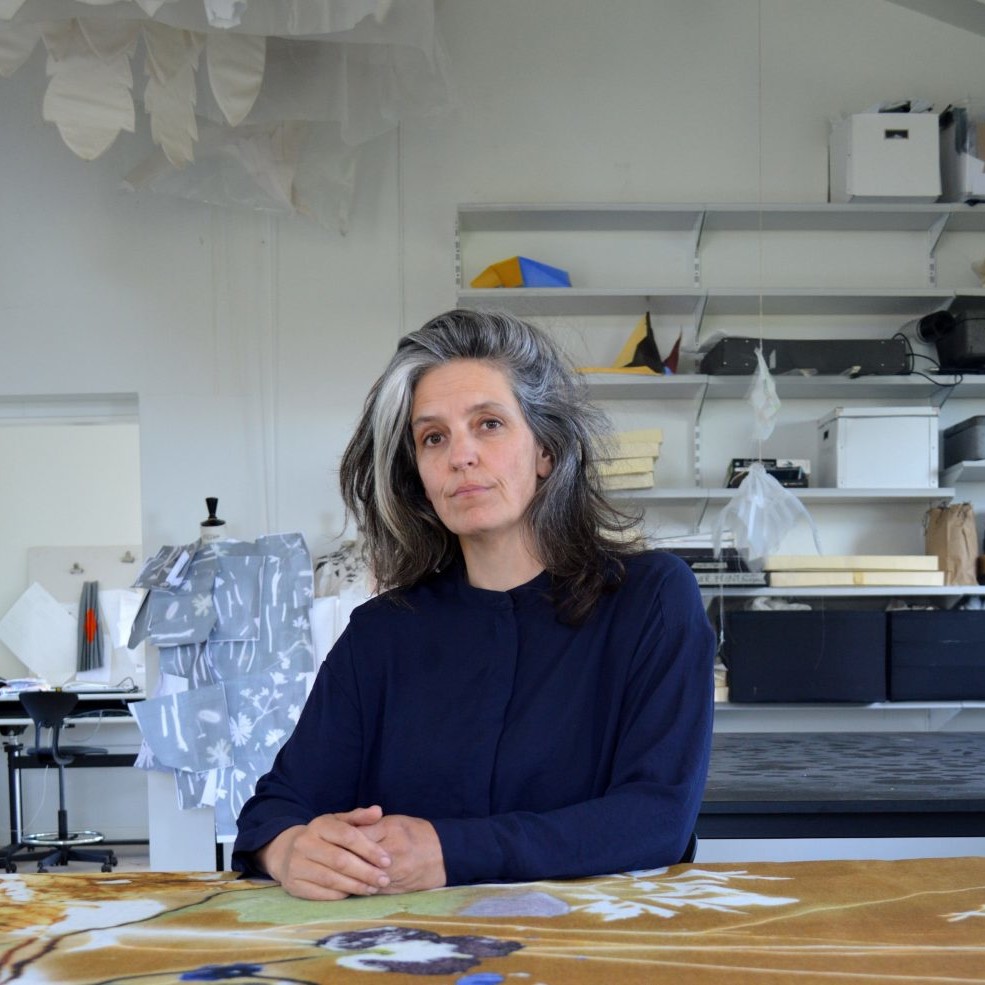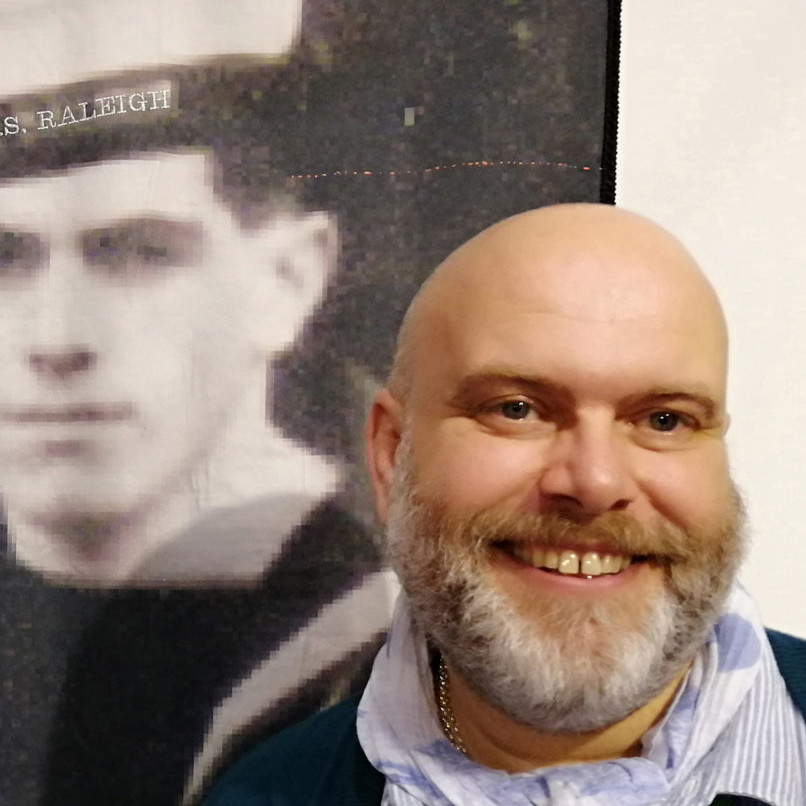Sarah Hatton Basket Weaver
How do you use different handles on different baskets?
The basket usually tells you what handle it needs by its intended fuction. Shopping baskets will usually have a handle which stretches from one side of the basket to the other. A thick willow rod is added as a handle bow. The willow is inserted into the basket alongside the handle bow, usually 5 rods on either side. The willow rods on one side are twisted around the handle bow to the other side. And then the willow rods from the opposite side are twisted, filling in the gaps that have been created.
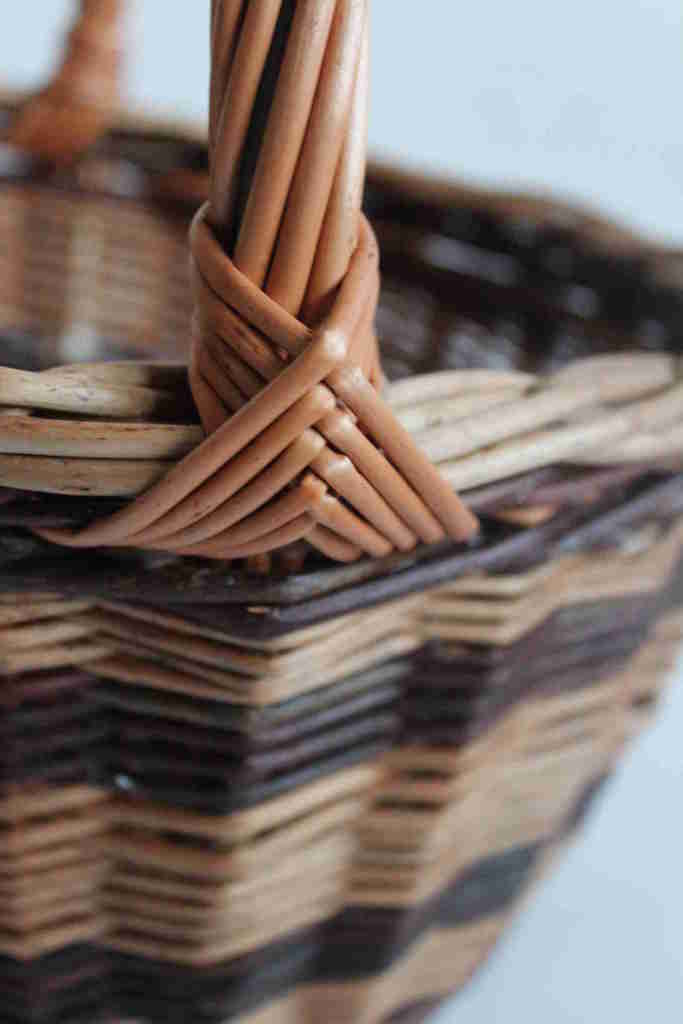
The tips of the willow rods are then used to wrap the handle to the basket using a decorative finish.
Log baskets usually have two twisted handles on either side of the basket for strength. You can also create finger holes as an alternative but I don’t believe these are as strong as twisted handles.
Contemporary baskets usually have twisted handles using contorted willow or hazel. It’s also very interesting to use a piece of wood that has had a vine growing around it.
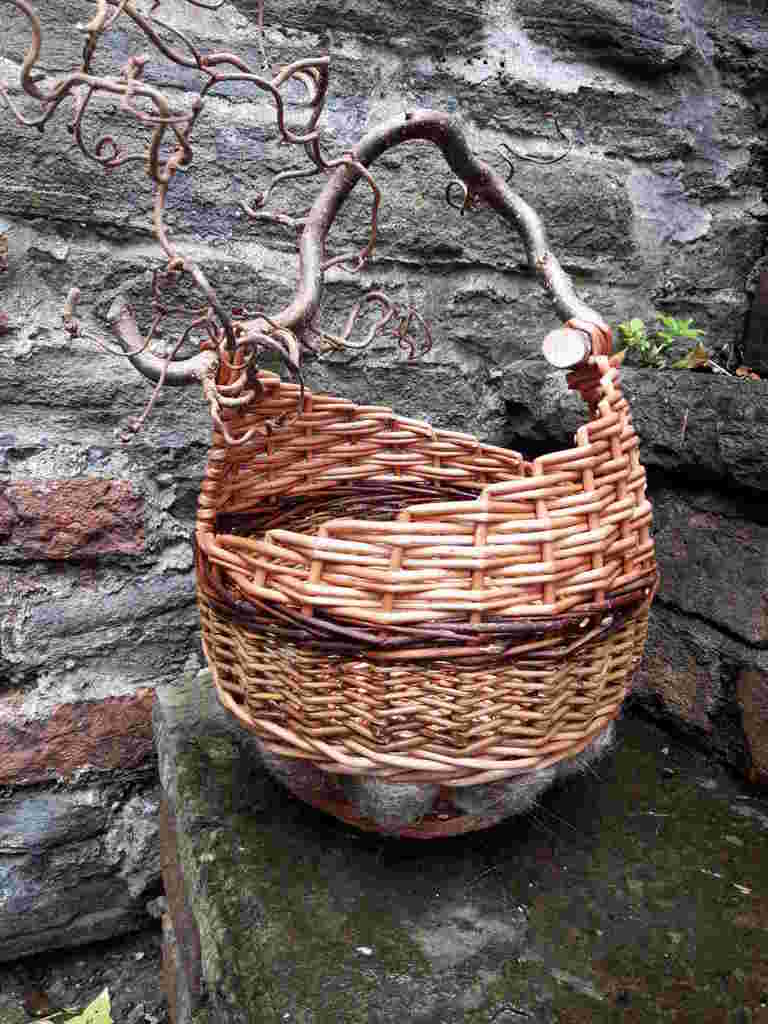
Contemporary basket
Comment on patterns in baskets.
By colour
By weaving patterns.
There are very many different weaves that can be used on basketry and it’s good to practice those basic weaves to understand how they could be changed to have a fuller effect. For example a single French Rand using 24 weavers can be changed to a double French Rand using 48 rods at a time. This gives you a more striking pattern and also fills up the basket quicker. It is also more difficult so practice, practice, practice. There’s also a different way to use a French Rand that looks like a zig zag pattern. You switch between weaving to the right with all the rods and then to the left with all the rods and then to the right etc.

Double French Rand basket
Colour can also be used to enhance a pattern. So on a double French Rand you could have two different colours. With your two willow rods you have one that’s a stronger colour than the other and then repeat this with all 48 rods. The effect is really beautiful. I now grow 26 varieties of willow to get some fantastic colours.
Discuss one of the larger pieces you have made and take us through the process.
I have recently completed a commission with my willow weaving friend Melanie Bastier who is a renowed willow sculptor. We created an 8 foot high willow brinker which is someone who would scythe the ditches and reens on the Gwent Levels. It will be situated at the Magor Marsh Nature Reserve on the Wales side of the Severn bridge. We were also featured on the BBC programme Countryfile which focused on the Gwent Levels.
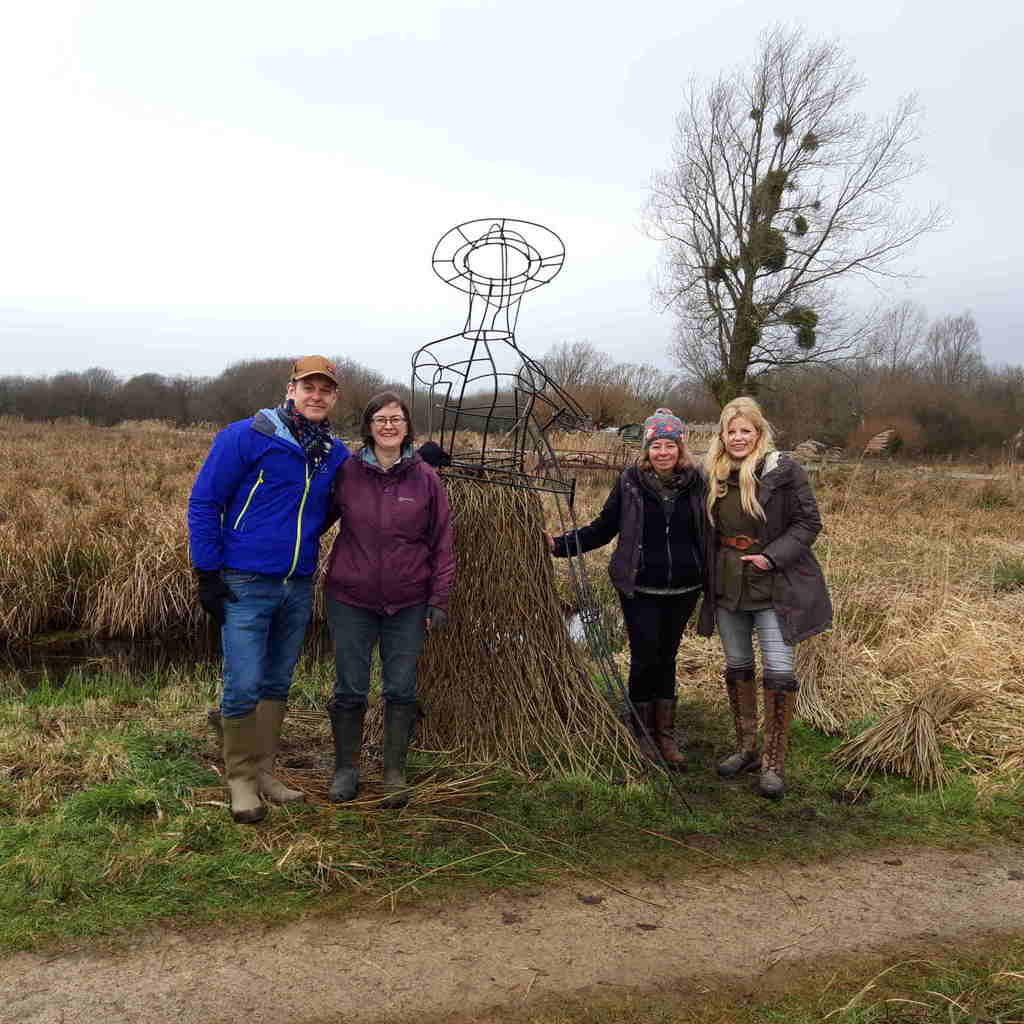
What is the history of Cyntell?
The Cyntell is a traditional Welsh agricultural basket, which was used for a variety of purposes.
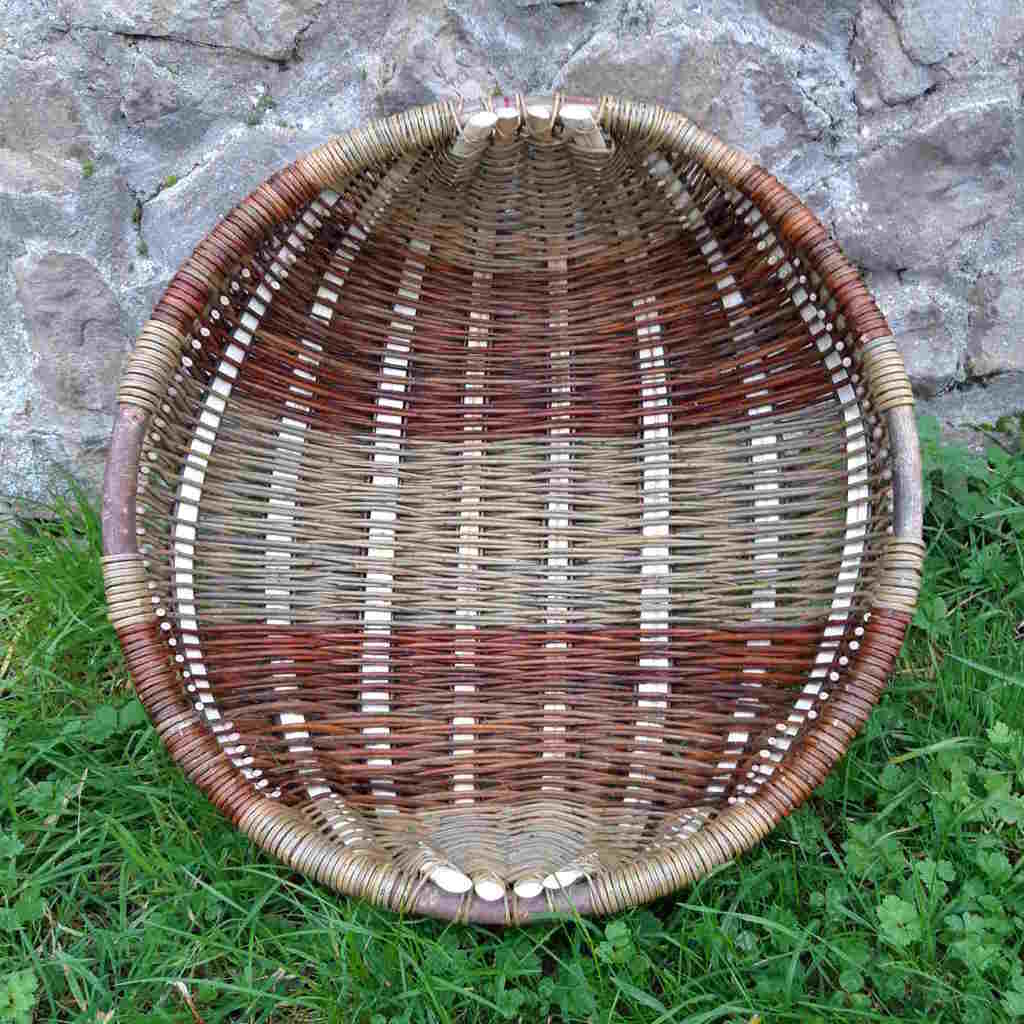
Cyntell Basket
They were usually made by the farmers in winter, used throughout the year and replaced. In the 1980’s there was one person called D J Davies making the Cyntell. He taught a small number of people how to make the basket, one in particular, called Les Llewellyn has taught most of the members of the Welsh basketmakers South Wales group. It is a difficult basket to make as the frames are dried on a forma for up to a year. The ribs are created by splitting an inch thick willow rod into two, shaving it down and also dried on a forma
The double L in the word cyntell is prounounced by putting the tip of your tongue towards the front of the roof of your mouth and then blowing air out of the sides.
How did your children’s willow play den come about and what is the life expectancy of one?
I developed my willow play den after a customer asked me to make one, which could be packed away. I used to have a Wendy house when I was a child and always loved playing in it. I wanted to create a play den using panels of willow that could be tied together, then in winter taken apart and packed away in a garage or shed so that it would be protected from the worst of the winter weather. This means that the life expectancy would increase from around 3-5 years to 8-10 years. The willow den can also be painted once or twice a year with boiled linseed oil mixed 50-50 with turps to increase the life.
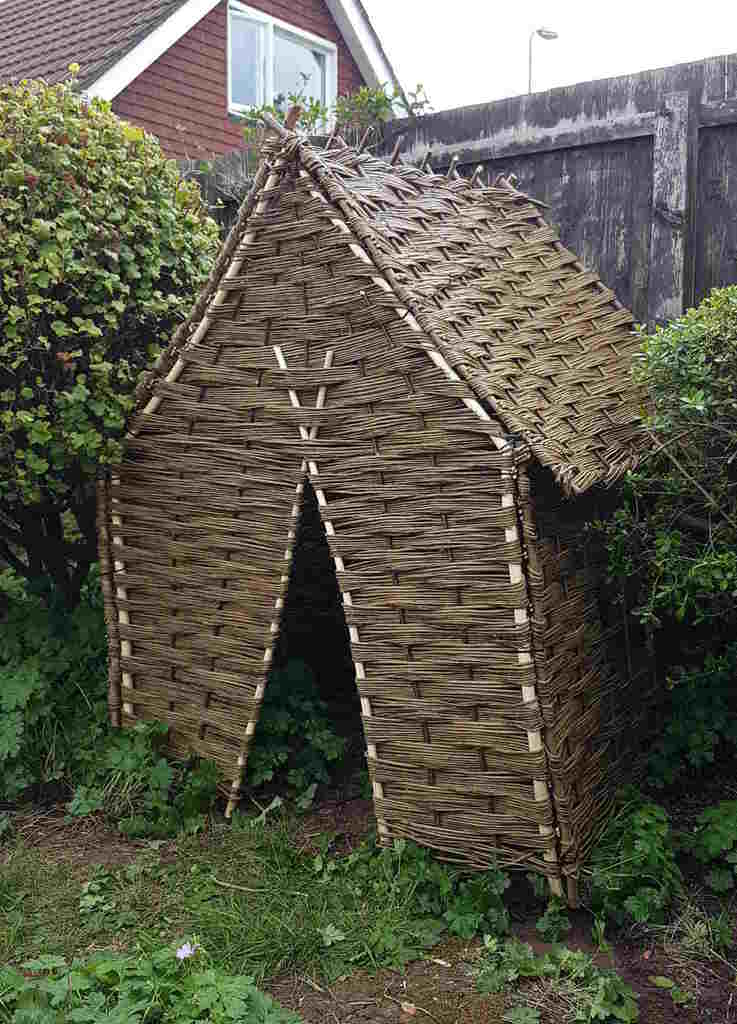
Willow play den
Expand on your ‘Christmas’ bark stars.
The bark stars are naturally scented which unfortunately I don’t smell anymore as I’ve been working with willow for such a long time. I started making the willow bark stars last year for the first time and have only attempted two sizes of 7cm across and 10cm. The bark I have used is willow bark and is harvested from the willow in the middle of the year, in the UK, May or June, when the willow is in leaf. This means the bark is loose and can be easily peeled once a knife is run along the length of the willow rod. The pattern of the stars is traditional Scandinavian.

Bark Stars
Discuss your classes.
My classes cater for a wide range of people, those that are interested in basketry, that would like to have a go and those that want to make something for a specific purpose. I encourage beginners to try the round basket or a garden trug first. These are nice, straight forward baskets and you can go home with a finished basket and some knowledge. The most difficult baskets are square or rectangular basket and also the Cyntell. With every basket you learn new techniques and also ways to use the tools and formas to help you to produce the basket you want.

Moses Basket
What lead you to basketry and willow growing?
I attended the Royal Horticultural Society, RHS, Show in Cardiff to see the flowers and happened upon a willow flower weaving workshop. I was fascinated that you could take a bundle of willow rods and you could interweave the rods to make a flower to put into your garden. I attended course after course and became hooked. Within 6 months of attending the courses I planted around 2000 willow cuttings to get my own supply and choice of variety.
Can you give us a brief understanding of the production of willow?
Willow is planted as a 30cm long bare root cutting during winter while the plant is dormant. It is then coppiced after one year’s growth once the leaves have dropped and the plant is dormant again.
There are different types of willow. Brown willow is any willow that has its bark left on. Buff willow has been boiled for 10 hours and then had its bark stripped. It turns a pinkish colour during the boiling process as the tannins stain the willow. White willow is produced by standing the freshly cut willow in a small amount of water until the rod starts to produce buds. The bark is then loose and is easily stripped away revealing the pure white colour of the rod beneath.

Willow growing.
What are several of the different and unexpected colours of your willow?
There are 300-400 varieties of willow though not all are suitable for basketry. Willow comes in a variety of colour and I am constantly finding different varieties to plant. I have brown, green, purple, black, cream, orange, yellow to name a few. The colour of the willow often changes as the willow dries and sometimes the dried colour can be completely different from the fresh colour. With some willows the colours changes if you dry the willow in the dark or in the light, this only happens with certain varieties though and something you learn as you go along.
Explain how you sell, willow cuttings and the transportation and times of the year they are available.
I sell willow during the winter months so that the willow cuttings are dormant and ready to be planted. I sell them in packs of 10 willow cuttings as each plant will give you between 30-50 rods so you will get a small bundle of willow rods from 10 cuttings. Currently I only sell my willow cuttings in the UK as there are lots of rules and regulations around exporting live plants.
Thinking, of the environment. Can you expand on Willow coffins and their place in our fragile environment?
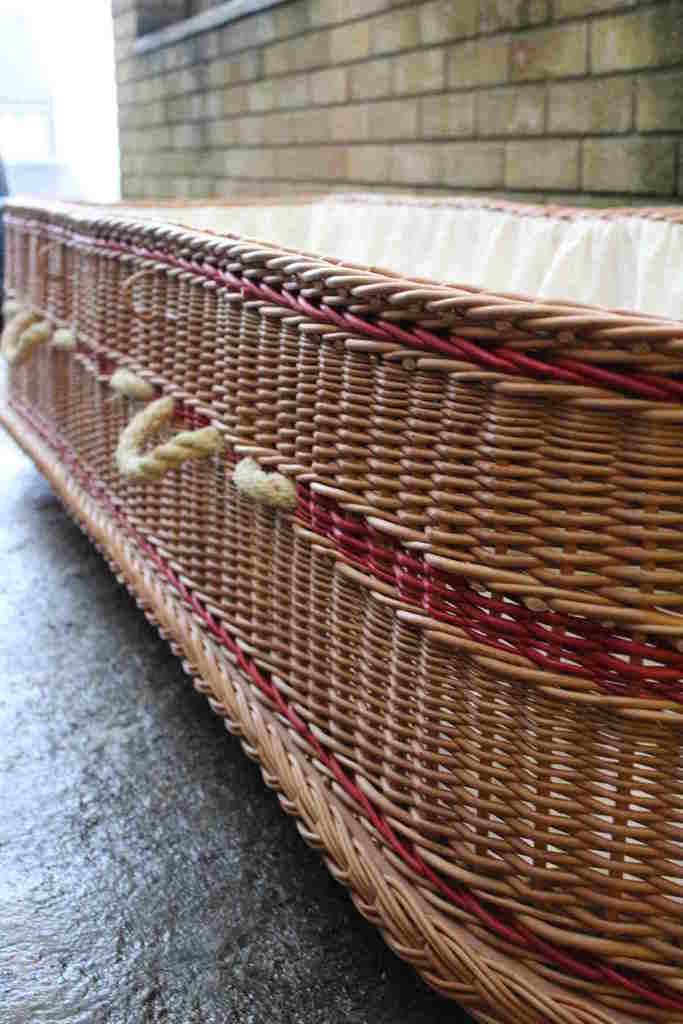
Willow Coffin
When we were designing our willow coffins we wanted them to be used for burial, cremation and also natural burial. For cremations we had to use a solid base as they will not accept woven bases. We make sure that we buy our plywood for the base from FSC certified sources. All the willow we use either comes from our own grown or willow growers in Somerset. This makes our willow coffins sustainable and friendly to the environment. We are passionate about creating high quality willow coffins using our experience of over 25 years of willow weaving. For the willow coffins I have a separate business called Lily Willow Coffins with my business partner, Melanie Bastier.
Contact:
Sarah Hatton
info@hattonwillow.co.uk
Website: https://hattonwillow.co.uk
Deborah Blakeley, Melbourne, Australia
Interview by Deborah Blakeley, April 2020
Think a colleague or friend could benefit from this interview?
Knowledge is one of the biggest assets in any business. So why not forward this on to your friends and colleagues so they too can start taking advantage of the insightful information the artist has given?
Other artists you may be interested in:


